Text
How Were the Great Lakes Named?

The Great Lakes are five freshwater lakes located in the central-eastern part of North America. Most people know this, but few also know the origin of their names.
Lake Superior
Its name is merely a reflection of its huge size - 82,100 square km and 12,100 cubic km, but probably also of its position, north of Lake Huron (“lac supérieur” in French means “upper lake”).
Lake Michigan
Its name comes from the Ojibwa Indian “mishigami”, which means "large lake." Lake Michigan is actually only the third largest of the Great Lakes, but its size is still impressive and it also has an unusual water flow.
Lake Huron
Lake Huron shares the same body of water with Lake Michigan and is the second largest (59,600 square km) of the Great Lakes. It was named after the Hurons (Wyandot Indians) who lived there.
Lake Ontario
In the language of Wyandot Indians, “Ontario” means "lake of shining water". Located at the base of Niagara Falls, Lake Ontario is the smallest of the five lakes (only 18,960 square km), but it is deep and holds about 1,600 cubic km.
Lake Erie
Its name comes from “erielhonan”, which in the Iroquoian language means "long tail". It has to do with the lake`s shape. Although it is slightly larger than Lake Ontario, it has the smallest water volume of the Great Lakes (only 484 cubic km).
Look for beautiful Great Lakes art created by Cap’n Jim Clary at Cap’n Jim’s Gallery in St. Clair, Michigan.
Article source here: How Were the Great Lakes Named?
0 notes
Text
Common Themes of Maritime Art

Maritime art is a category that includes various creations where the sea is the main character. Maritime art has a special atmosphere in which the sky and the water are the most important elements.
Exquisite maritime art has appeared since the Middle Ages. It was very popular especially in the 17th, 18th and 19th centuries. The subjects of this genre are landscapes that include ships in estuaries, beach scenes, storms, boats in their fight with huge waves, or boats on quiet waters, predisposing to calm, meditation and relaxation.
In the Romantic Period there was a reorientation in the style of maritime painting. Representative for this period is Le Radeau de La Méduse, created by Théodore Géricault between 1817-1819. The very large painting (491 cm x 716 cm) represents the moments after the shipwreck of the French frigate La Méduse, on July 5, 1816. Of the 147 people saved on rafts, only 15 survived during the 13 days on the sea, until they were found.
One of the great 19th-century marine art creators was the Russian Ivan Aivazovski, who really loved the sea, and this is obvious in each of his approximately 6,000 paintings. His favorite themes are sea storms, but also historic events, such as the Battle of Navarino in 1827, which he transposed into a painting in 1846.
Article source here: Common Themes of Maritime Art
2 notes
·
View notes
Text
Maritime Art for a Special Mother
If your mom is an art lover, here is an idea for Mother`s Day celebration: take her to a museum or art gallery with beautiful nautical paintings. Do not choose one of those regular museums that she has probably visited countless of times; opt instead for something more special, like a maritime museum, just to offer her a new experience. This is a great way to celebrate Mother`s Day with beauty and grace.
Here are just a few Maritime Museums or galleries to consider, depending on your location.
San Diego Maritime Museum is renowned worldwide for its excellence in historic vessel restoration, maintenance and operation. You can take a public tour and enjoy its ship collection that includes the Star of India, the world’s oldest active ship.
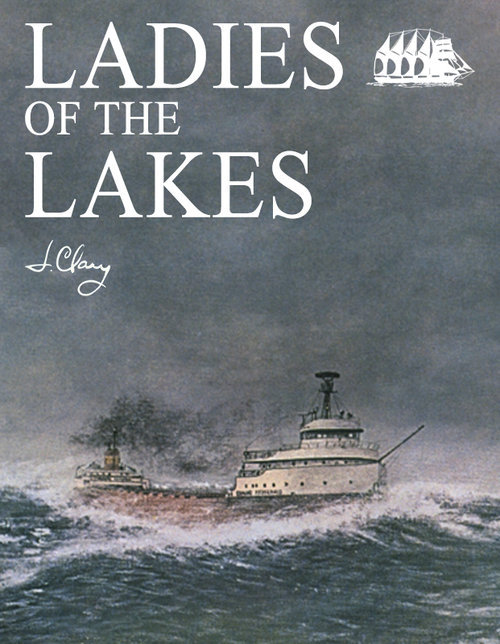
Maritime History in Art in Saint Clair, MI offers nautical art & paintings by Cap'n Jim Clary Maritime Artwork. Visit https://www.jclary.com/ for a peek at these special paintings, books, and prints.
The Maritime National Historical Park in San Francisco offers you the chance to visit a collection of floating historic ships, some of them open to the public, and the Maritime Library at Fort Mason, filled with photos, historical papers and books on maritime history.
Charleston Navy Yard and the National Historical Park in Boston are two locations where you can learn more about shipyard technology and visit representative vessels built here.
Lake Pontchartrain Basin Maritime Museum in New Orleans brings Louisiana’s maritime history to life. You can enjoy exhibits, interpretive programs and publications.
Independence Seaport Museum in Pennsylvania is another great place to admire maritime art, enjoy interactive exhibits, a workshop on the water and visit historic ships.
Texas Seaport Museum is located in the historic port of Galveston and tells the story of seaborne commerce and immigration, through special exhibits and educational programs.
Article source here: Maritime Art for a Special Mother
0 notes
Text
Celebrating Mother's Day at the Great Lakes

If you plan to take your mom to a trip for Mother`s day, the Great Lakes are a wonderful destination, as they provide many opportunities for doing outdoor activities and enjoy your time spent together.
The Great Lakes offer gorgeous hiking trails, with the silence of the forests, pristine waters and the variety of wildlife that you can meet in your way. Besides hiking, you can also opt for diving, kayaking, and boating.
If you prefer a more formal way to celebrate your mother on Mother`s day, you can choose to visit some of the towns situated on those tranquil lighthouse-peppered islands, or to explore cities like Chicago or Milwaukee, with their superb architecture, beaches, shopping, restaurants, dynamic museums (The Automotive Museum and the Henry Ford Museum are just a few examples) and the vibrant nightlife. Visit the many art galleries to find exceptional pieces of nautical artwork.
The climate in the region of the Great Lakes is cold, but May is one of the best months to travel there; humid and sunny weather, just perfect for all the activities you want to do with your mother.
Whatever activities you choose, being in the Great Lakes region with your mom offers the most important thing: time spent together.
Article source here: Celebrating Mother's Day at the Great Lakes
0 notes
Text
Awesome Spots and Sights You Need to See Around the Great Lakes
From cities to beaches and from islands to hiking trails that span for miles, the Great Lakes have just about everything you’d need for an entertaining and relaxing vacation. Some of the following spots will definitely dazzle you, while others will outright amaze you and make you want to plan all your vacations on the beaches of the Great Lakes:
· The beach on Lake Michigan will offer you one of the most incredible places in the world for viewing the sunset. Here you can visit with your spouse for a memorable and romantic time spent watching the sunset and enjoying the hospitality of the locals. You may also want to bring some water colors and try a hand in creating a piece of Lake Michigan themed nautical artwork.
· The Sleeping Bear Natural Lakeshore is one of the best places to go to if you enjoy solitude and long walks. Here you can definitely lose yourself on the 65-mile long shoreline, and you can take some breathtaking photos as well.
· Finally, the shallow waters of Copper Harbor are a great place for fishing. If you want to relax and avoid the world for a few days, this is just the right place to do it. Even though Lake Superior’s water is not the warmest in the world, you can’t really find a more pristine and eye-catching, naturally beautiful place in the entire area of the Great Lakes.

Article source here: Awesome Spots and Sights You Need to See Around the Great Lakes
0 notes
Text
Learn About Geography the Fun Way: Great Lakes Trivia You’ve Never Even Heard
Geography is one of the most beautiful subjects on earth, and it definitely doesn’t have to be boring if you know how to look at facts and how to find unique facts about common geographical places like the Great Lakes. The following trivia facts about the Great Lakes will make you wonder whether you should rewrite your children’s geography textbooks yourself:
· Driving around the lakes would take an enormous amount of time to complete. If you’re looking for a fun and extremely long road trip, then this is it. Going around the Great Lakes by car will provide you with an impressive 6,500 miles of fun on the road.
· An unlikely fire that started in 1969 on the Cuyahoga River was actually the catalyzing trigger that spawned a new movement towards clearing up the waterway responsible for feeding Lake Erie and starting a series of environmental reforms that have transformed the way we look at the Great Lakes today.
· Do you know how many islands the Great Lakes contain? The actual number is even higher than 35,000. The biggest of them is Manitoulin in Lake Huron, which is considered to this day to be the largest freshwater island in the world, measuring 1,068 square miles.
Find wonderful Great Lakes art at interesting galleries found throughout the Great Lakes area.
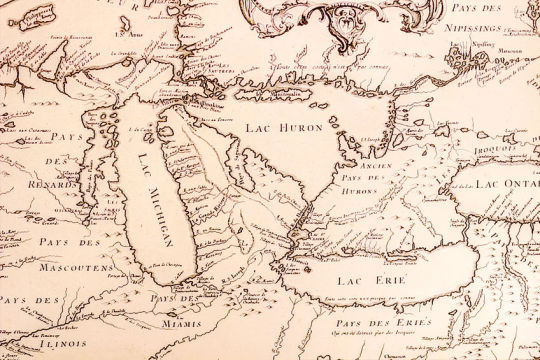
Article source here: Learn About Geography the Fun Way: Great Lakes Trivia You’ve Never Even Heard
0 notes
Text
The Creative Way to Learn About History: Start Painting It!
If you were like me in school, you probably thought about history as a pretty boring subject. However, as everything, history can show its true value if it’s regarded through the right “lenses.” And there are no better ways to see something than through the eyes of an artist.
When we look at the figures and dates associated with a battle like the Battle of Hastings, we can’t really imagine the actual scenes and the brutality of war. Also, when we read about kings, treaties and pacts between various allies, it’s hard to imagine how everything went down and where the meetings took place. So history can get boring pretty fast if all you have is information.
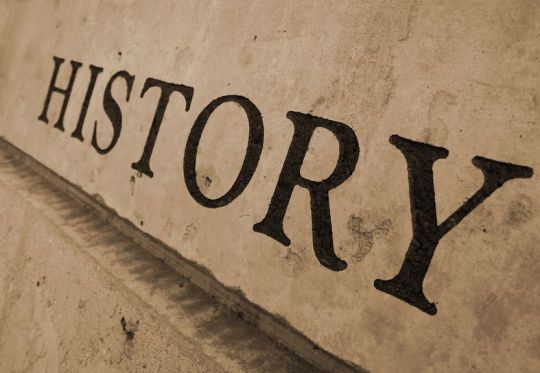
However, when you start repainting some paintings depicting famous battles, scenes or personalities from history, things will start changing pretty fast. Not only will you feel like you’re actually there, taking part in a historic scene that came to life, but you’ll actually start getting addicted to that feeling.
Also, painting historic scenes can help you learn the facts and figures a lot more easily too. When the painting is suggestive enough and tells the story of a certain battle or scene quite faithfully, then it’s easy to associate the scene with the information you’ve read in your history book.
Painting historical marine art, illustrations of famous ships, shipwrecks, or battle scenes will also give you historical references and timelines.
Article source here: The Creative Way to Learn About History: Start Painting It!
0 notes
Text
Exploring the Art of Painting: Why Are Ships so Popular Among Painters?
If you walk into a pub or a restaurant by the port, chances are you’ll find a painting with a large ship or a boat showing right in the middle. However, if you walk into a painting class or walk in on one of your family members practicing their painting skills, then you might actually find the very same scene. So, why is it that maritime art and ships are such a popular topic among painters?

From an artistic standpoint, the sea and the ships that navigate it actually carry a lot of weight. The uneven motion of the sea and the smooth edges of a ship’s contour makes it possible to almost capture the movement of the waves and the ship that passes through them in even a beginner’s painting or drawing. Simply put, ships look very artistic almost regardless of who is drawing them.
Another reason why maritime art is so popular has to do with symbols. From a symbolic perspective, ships carry even more weight. They can be regarded as symbols of life and of the artist’s journey through the troubled ocean of life. They can also be seen as a person’s willingness or determination to take charge of their life and navigate that ocean despite the fact that they are constantly faced with agitated waves and the peril of being lost at sea.
Article source here: Exploring the Art of Painting: Why Are Ships so Popular Among Painters?
0 notes
Text
Popular Maritime Sayings
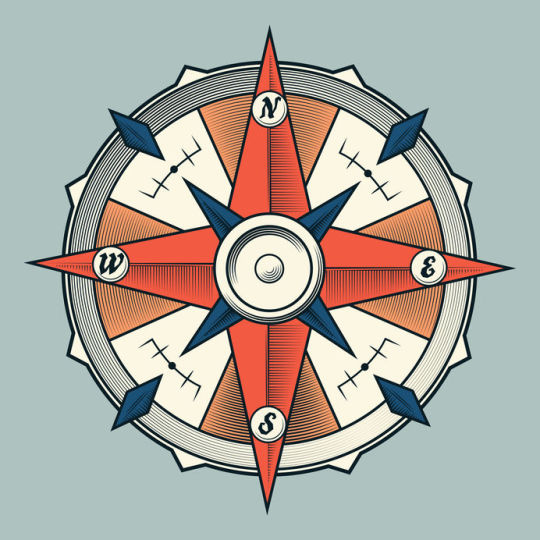
The sea lore is rich and provides endless inspiration to artists creating memorable nautical prints, writers, artists, filmmakers and even regular people. In fact, although you may not be aware of it, you may be using some saying and phrases in everyday conversations that originated aboard ships.
While the original context may be lost or irrelevant, these sayings stay fresh and meaningful even today. And so we keep using them. But which one are they, and what is their story?
1. “Showing One’s True Colors”
We use this saying to describe someone who reveals its true character after playing a role in order to achieve certain benefits (a promotion at work, getting acquainted with an influential person).
The origin of this saying comes from the days of battles at sea. It was not unheard of for a ship to bear the flags and pennants of the enemy in order to penetrate their harbor and then reveal their true flags (color) and open a devastating attack.
2. “To Be Caught Between the Devil and the Deep Blue Sea”
This saying describes an impossible situation, where no acceptable solution can be found. For sailors, the devil was the name of the seam at the bottom of the ship, from bow to stern. This seam was prone to breaking and leaking – thus the sailors had to choose between waiting to be drowned by water entering the ship and jumping in the ocean.
3. “Learn the Ropes”
This is the advice a new hire is given – to become familiar with the work procedures and company culture as soon as possible. For sailors, learning the ropes was very important, because they were used for handling the various types of sails. During a storm, knowing how to handle the ropes properly made the difference between life and death.
Article source here: Popular Maritime Sayings
1 note
·
View note
Text
Maritime Folklore: What's Real and What's Not
Every profession in the world has its treasure trove of legends, myths and superstitions. A chimney sweeper present at a wedding will bring the young couple good luck. But crossing paths with a priest as you go about your business will bring you bad luck.
However, few professions have a richer folklore than that of sailors. Centuries of exploration, trade, piracy and whaling have created a seemingly endless list of unwritten rules. While some of them seem hilarious, they used to be taken very seriously centuries – and even decades – ago. But how true are they? Let us take a look at some of them:
1. The Name of a Ship Ending in “A” Brings Bad Luck
This myth originates in the dark years of the Great War, when both Britannia and Lusitania went down under ceaseless fire from German torpedoes. However, the USS Saratoga was extremely successful and lucky during the intense maritime battles of World War II.
2. Renaming a Ship Is a Bad Omen
For seafaring folk, getting the name of the ship right from the start is very important. Changing the name of the ship is seen as very bad luck. A classic example in this respect is Sir Ernest Shackleton’s Arctic explorer Endurance, which used to bear the name of Aurora. The 1914 expedition ended in disaster, when the ship got trapped in ice and then crushed.
3. No Women On Board
An old superstition said that women aboard a ship bring bad luck. This myth was certainly fueled by fears that sailors would be distracted from their work by the presence of the fair sex. Also, jealousy could tear apart the unity of the crew. At the present, both men and women serve with professionalism and dignity aboard both civil and military ships.
For beautiful nautical paintings, visit the Maritime History In Art.
Article source here: Maritime Folklore: What's Real and What's Not
0 notes
Text
How Are Ships Named?
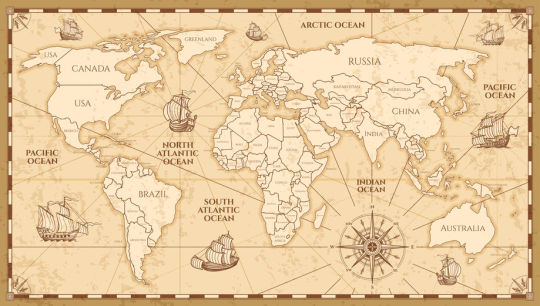
There are many artists and writers who have shared the beauty of nautical artwork through drawings, paintings, and books.
USS Enterprise, USS Nimitz, USS Utah – these are well-known names of famous US battleships that fought with honor and glory in the two world wars. But how exactly did they get their names? Who and how decides on the name of a new ship?
A Clearly Regulated Process
The US Navy has strict procedures concerning the person in charge and the kind of name a ship can be given. Thus, the Secretary of the Navy (SECNAV) has the responsibility and honor of naming a ship. The SECNAV acts under the direction of the President of the United States and in observance of rules set by the Congress.
The rules for naming ships are set according to the class of each vessel. Thus:
1. Aircraft Carriers Are Named after Past Presidents
The 14 aircraft carriers in the US Navy fleet bead the names of deceased US Presidents and two Members of Congress.
2. Destroyers Honor Members of the Navy
Names of destroyer ships include members of the Marine Corps, of the Coast Guard and Secretaries of the Navy.
3. Littoral Combat Ships Bear the Names of US Cities
Some of the best known ships of this class are USS Coronado, USS Forth Worth, USS Omaha and USS Indianapolis.
4. Amphibious Assault Ships Pay Homage to Epic Battles
The exception to this rule is USS America. But you certainly heard of USS Iwo Jima, USS Tripoli and USS Nassau.
5. San Antonio Class Amphibious Ships Are Named after Major US Cities
Some of these cities are the victims of the 9/11 attacks. Other names include USS Portland, USS Anchorage and USS San Diego.
Article source here: How Are Ships Named?
0 notes
Text
Fun Facts about the Great Lakes

The Great Lakes at the border between USA and Canada are five in number. From west to east, they are: Lake Superior, Lake Huron, Lake Michigan, Lake Erie and Lake Ontario. They were formed approximately 12,000 years ago when glaciers started to melt.
These lakes hold a huge proportion of the total surface freshwater of the North American continent – 84%. And each of them has its specific particularities. Let us discover the most unexpected and fun facts about the Great Lakes.
1. Lake Superior Does Not Behave Like a Lake
It is more like an inland sea, because it has tides. It also holds enough water (3,000,000 million gallons) to cover both North and South America with 1 foot of fresh water.
2. Lake Erie Allegedly Harbors a Monster
The monster named Bessie was described as having between 30 and 40 feet in length. It was first sighted in 1973. Alas, only inconclusive and grainy photos exist of it, making Bessie as elusive as the more famous Nessie monster of Loch Ness.
3. Lake Huron Hides a Few Secrets
One of them is a complex of animal-herding structures which are approximately 9,000 years old. Prehistoric humans used to inhabit the area of the lake before the glaciers melted.
Lake Huron also has massive sinkholes with a combination of chemical and organic substances that replicate ocean conditions of 3 million years ago.
Maritime History in Art is the place to go for paintings by artist Jim Clary depicting the Great Lakes, famous shipwrecks, and other beautiful pieces of nautical art.
Article source here: Fun Facts about the Great Lakes
0 notes
Text
"We Found Her..."
I was seventeen years old when dad returned from the Titanic expedition. And I remember the look on his face as he watched mine taking in the video playing on our VHS machine.
Silt, that much was obvious. And an oppressive darkness against which the lights of the unmanned sub prevailed only barely as tiny particles floated through sea water.
A sudden scratching sound. And then a bump knocking the sub sideways — or, rather, a bumping into something that caused the craft to pivot away from its vantage point to face another direction just as bleak.
“Keep watching.”
A boulder came into view just then. Covered with “…barnacles?” I wondered out loud.
“Well, she’d been under two miles of water since 1912.”
“…wait. What?”
“That’s one of her prop blades. We found her.”
___
A week earlier he had managed his way into the lab of the expedition vessel as the scientists and engineers sifted through images transmitted from the camera attached to the sub two miles beneath the surface. As a photograph emerged from the printer it would trade hands down the line of the large table in the middle of the lab. Scrutinized by one specialist after another, it would end up in a pile at the end where it would ultimately be catalogued among thousands of other images taken during the, thus far, fruitless expedition.
Indeed, this was the last day the team would be out on the Atlantic before returning empty-handed. It was this disappointing resignation that made way for dad’s theory to be tested. There was nothing to lose. Well…not exactly nothing, given that the sub being dragged along the ocean floor was twin to the one lost when the line snapped sending millions of dollars of technology into oblivion.
Still, dad had convinced Jack Grimm, the expedition’s benefactor, to attempt one last dive. Not where they’ve been searching but in a location suggested only by a single, obscure line he’d read in the transcript of the hearings held after her sinking. The only further corroboration came from the memories of a few survivors he’d interviewed during years of his own research and study.
“We’d been looking for days in the spot she should have been — in the area she was supposed to be according to the coordinates of her last distress signals. But she wasn’t there. Nothing was there. And while that really disheartened the expedition team, I was becoming more and more intrigued because I’d remembered that one line from the transcripts: the claim that, after she hit the ice berg, she came to a full stop — but then restarted her engines and sailed on at full power. For about 45 minutes. So if that was true, she wouldn’t be where we’d been looking. She’d be over here.”
During the hearings the claim was overlooked as wholly inconsequential. But it was precisely this sort of information that regularly niggled its way into dad’s memory to one day, somehow or another, emerge in some detail of one of his maritime paintings.
“I convinced Mr. Grimm to send down the sub and the sonar equipment one last time. It was a huge gamble, but time was running out and it was in the direction of our return anyway. He agreed. Simple as that.”
___
The printer spat out a new image about every 8 seconds. Lights blinked, equipment hummed and whirred, voices once hopeful and expectant now took on a tone of defeat. The team had expended every ounce of its energy and expertise only to come up short.
Dad maneuvered himself between several scientists to make his way to the table covered with charts, schematics, photographs and all manner of measuring paraphernalia. Prior this last day at sea, he’d made a point of staying out of the lab and out of everyone else’s way as much as possible. But by now he’d befriended several people and chanced his presence in the room.
After the sub was bumped and her camera was photographing the endless silt, the small rocks, and the large boulder, the crew miles above was sending the images down the row of people huddled in the cramped space. And when this particular photograph made its way into dad’s hand, he knew immediately what it really was.
“I muttered to myself, ‘…we found her,’ and I just happened to say it during one of those natural lulls in the background noise of a room. So everyone heard me say it. One of the scientist raised his voice and said, ‘Who said that? Found what?!’ Every eye in the lab rested on me. I felt two inches tall because I technically wasn’t supposed to be in the lab. But I knew what I was looking at. I knew it with every cell in my body."
“That’s not a rock. That’s a prop blade. We found her. We found the Titanic.”
___
Mayhem. Shock. Yelling. A command to feed the photograph’s information back into the computer. Tones. Beeping. Sonar equipment simultaneously confirming the image with the sudden outline of a behemoth structure lying on the ocean floor. Then a computer matching the photograph to the schematic of the Titanic’s propellors.
Match.
“We found her.”
Article source here: "We Found Her..."
0 notes
Text
Tips for Using Naval Paintings to Give Your Home A Nautical Flare
Nautical home decorations, including naval paintings and prints to hang on your walls and sea-inspired colors featured on other décor elements are great for creating a nautical-inspired home – here is how to use marine prints in your rooms:
- Pick the right atmosphere – the sea can be calm and soothing, wild and scary and everything in between. Pick the painting or the print that features the right atmosphere – a sunset over the sea or a romantic and mysterious wreck surrounded by calm waters works best in rooms used for relaxation and daydreaming, while depictions of the angry sea and darker, colder and steelier colors of titanic wall art may work better in spaces where you spend time more actively;
- Use the theme in your painting as inspiration for decorating the entire room or, why not, for the entire house – hang your naval painting in a focal point and use decorations inspired from it across the room. Navy blue accents, such as throw blankets and ornamental pillows, décor elements inspired by the sea, such as anchors, blue and white curtains, the colors of the sea and vintage lamps that seem to be taken from a wreck and featured on the walls are all great for creating a harmonious and calming design.
Article source here: Tips for Using Naval Paintings to Give Your Home A Nautical Flare
0 notes
Text
Famous Shipwrecks You Might Not Have Heard Of
Whether you are a diving enthusiast, trying to figure the next wreck to explore or you are a history buff, looking for the next seaside destination with some special wrecks to visit, or have a special interest in Great Lakes art, here are some famous wrecks that might not be so widely advertised as others, but are not less exciting either:
- The MS World Discoverer at Solomon Islands – the Danish cruise ship hit a rock in 2000. The passengers and the crew were rescued, but the ship is still in the warm, crystal waters of Roderick Bay;
- The Queen Anne’s Revenge – the 18th century warship was the property of Blackbeard, who grounded the ship in 1718 and abandoned it after having used it only for a year. The wreck is located at the shore of North Carolina, at Atlantic Beach and it is included in the list of heritage places as well;
- The Yongala – the wreck at the shores of Australia is considered to be among the world’s best diving sites, with frequent sightings of manta rays, sharks, colorful corals, turtles, octopuses and sea snakes;
- The Zenobia at Cyprus – the ferry sunk in 1979 and now she is laying on her side in Lanarka. Fortunately, nobody was killed in the accident.
Article source here: Famous Shipwrecks You Might Not Have Heard Of
0 notes
Text
A Story Behind A Story
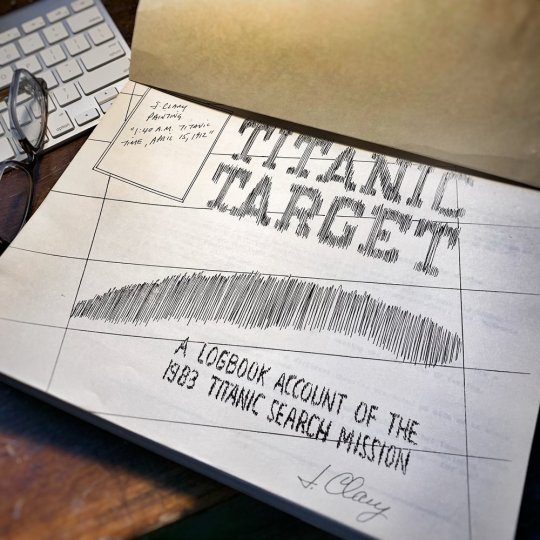
Dad was well known for the lengths he’d go to for a painting. Aircraft carrier landings, trips aboard Great Lakes freighters, drives in the middle of the night to a shipyard to scrounge for discarded props (my brothers and I thought he was out of his mind, but who can argue with the grin he wore driving all the way there?); dozens and dozens of interviews with survivors of shipwrecks, re-enacting a deck fighting scene (the USS Constitution in Boston, if memory serves), and on and on and on. There are dozens more, believe me. And though I could spend a few hours chatting with one of my siblings or mom to jog our memories, it’d be an exercise in what was, to us, hardly remarkable. Because he was always doing something like this. Always off on some adventure, excursion, expedition, or wild goose chase. And it wasn’t the frequency with which they happened that I recall the most. It was the normalcy.
Still, for all the regularity, the story I remember the best was a trip to the University of Michigan’s planetarium. I’ll have to ask my friend Pete the exact month and year (he never forgets these details from our high school days) because I don’t remember and because it blurs into all the other experiences. What I do remember, though, is the heat. The suffocating temperature inside the darkened building under the dome-shaped screen. It was onto that bowl of fabric the astronomer dad was collaborating with projected a calculated expanse of stars. And while the mercury rose every minute, dad sat on the ground holding up a canvas with one hand and with the other, painted each star. One by one.
Literally, one...by...one.
I’ll never forget the focused thrill on his face. I’ll never forget Pete and I ready to sell our souls to get out of what was, to us, abject boredom and stifling furnace. And I’ll never get over smiling now at what I didn’t care about then: that he was painting each and every visible star holding vigil in the sky the night the Titanic met her doom and sank to the bottom of the ocean where she would descend into legend and remain hidden forever. That is, until one day over seventy years later — precisely because of his rabid pursuit of details — he’d be among a crew of scientists and engineers searching for her final resting place.
Which, incidentally, they would finally discover because dad just so happened to remember a story everyone else dismissed as inconsequential.
Article source here: A Story Behind A Story
0 notes
Text
Why Maritime Prints Make Great Gifts
Maritime prints, whether they depict calming, crystal waters, stormy seascapes, mighty ships or wrecks, make excellent gifts for anyone, not only for boating and diving enthusiasts, for history buffs passionate about pirate ships and battle cruisers or for avid fishermen. Here are some tips for you about getting the most suitable piece:
- Digital versions or prints on heavy paper for a few dollars – there are many great maritime art websites that offer digital copies of amazing marine artwork created by the world’s most famous artists. You can download the print in digital format or you can order your prints on special paper to be hung on a wall;
- A calming effect on stressed nerves – seascapes have a calming effect on the nerves. It is surely better to take in the scenery from a shore covered in white powder sand, but having a large marine poster on your wall can also create the illusion of actually being there;
- Staying focused on goals – if the person you want to offer the gift to is dreaming of owning a private yacht or of buying a small bungalow by the sea, a marine print is an excellent reminder of the goal and a beautiful piece for the wall, too.

Article source here: Why Maritime Prints Make Great Gifts
0 notes